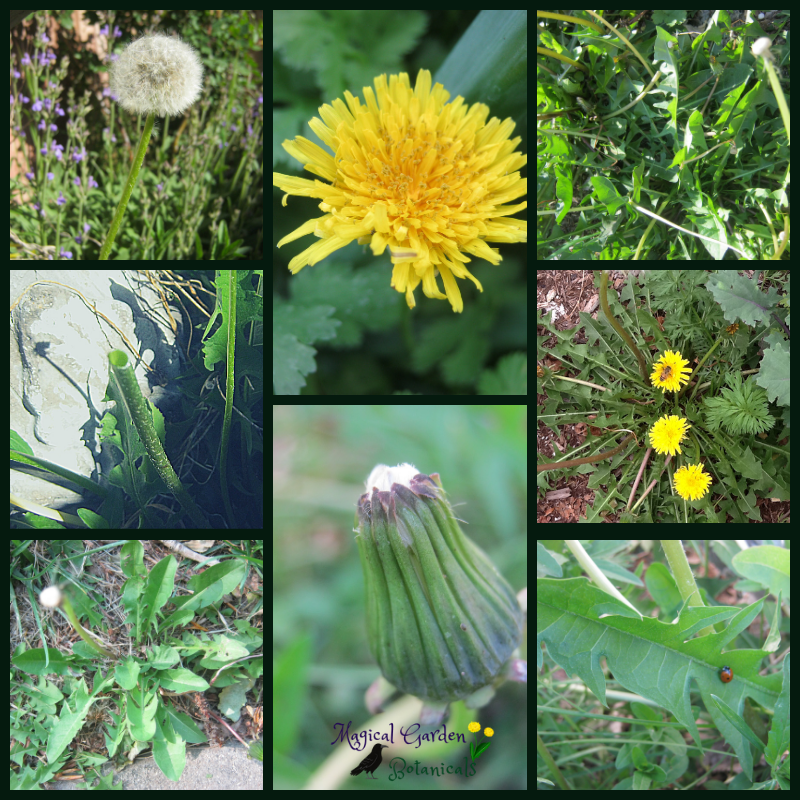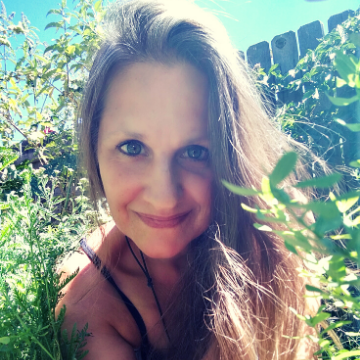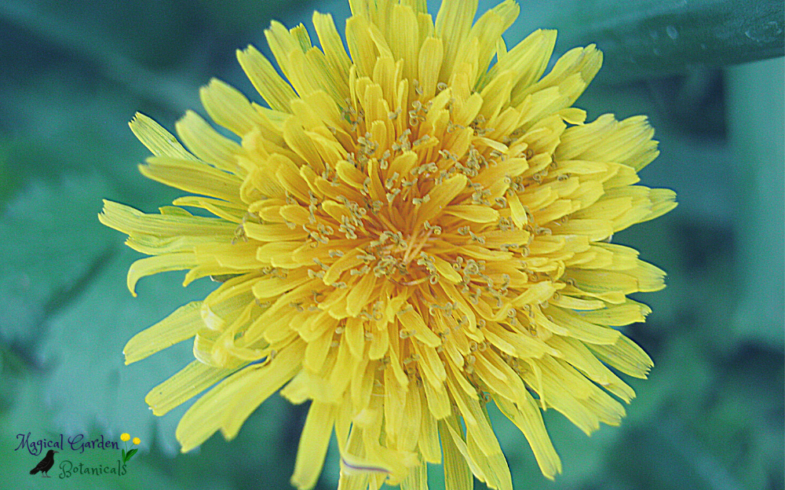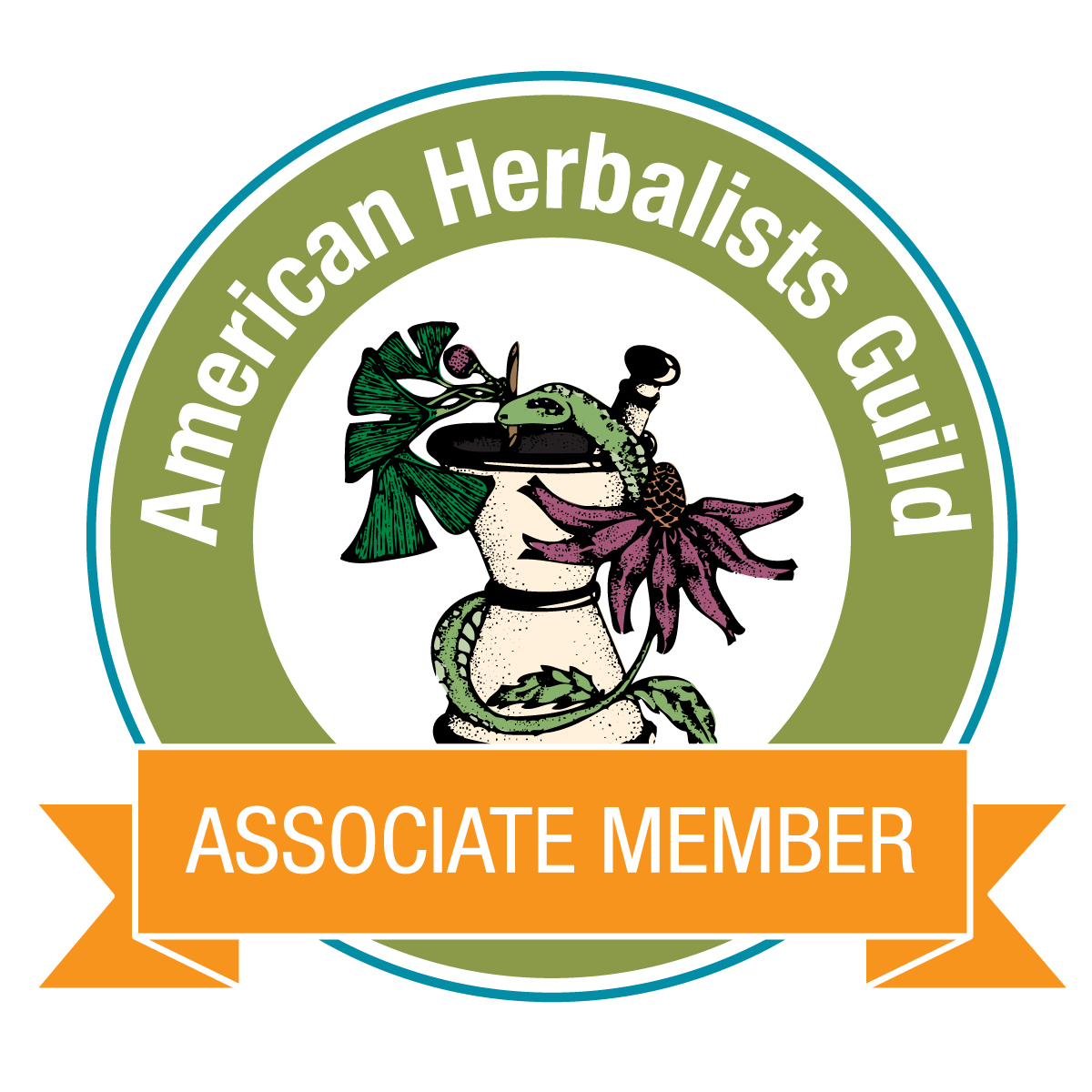The Dandiest Of Them All
They populate urban parks and forgotten fields. Their seed heads are the magic of childhood. It’s hard to resist making a wish as the seeds disperse like little fairies casting off into unknown adventures. This magical plant is Taraxacum officinale, otherwise known as dandelion. To many, they are no more than a pesky weed. Conversely, to some people’s dismay, their likeness even graces the bottle of a popular herbicide.
There’s a lot of information available about dandelions, everything from their ability to cure cancer to delicious recipes. Perhaps in this respect, it is one of the most diverse plants in all of its simplicity. Dandelion is rich in vitamins A, B, and C and minerals such as iron, potassium, calcium, phosphorus, and boron. Dandelion can also contain up to 25% inulin, a prebiotic fiber. All plant parts can be eaten, including the flowers, stems, leaves, and roots. In regards to healing, each part of the plant offers benefits. The entire plant, or just the root, can be used to make a tincture. The flowers are lovely for making infused oils. These oils can be used for skin soothing purposes or to create healing and nourishing balms, salves, and body butter. The stalk or stem contains a milky latex that helps get rid of warts. Apply the fresh milky liquid to the area several times a day. It can take a few weeks for the wart to disappear.
Dandelion is beneficial to the liver, kidneys, and digestive system. It improves bile flow and works as a mild laxative. Also, due to its bitter components, it may stimulate appetite and enhance the absorption of nutrients. The greens act as an effective diuretic without depleting potassium. Contrary to many pharmaceuticals, the greens increase the body’s potassium level. Dandelion is often used in the treatment and prevention of gallstones. Benefits can be seen by drinking 1-2 cups of dandelion tea per day. Dandelion may also aid in regulating blood sugar and cholesterol levels. There have also been promising studies conducted on their ability to prevent tumor growth through stimulated macrophage activity. (See links below)
Dandelions are part of the Asteraceae family; this is quite a large family of plants. However, a distinguishing factor in this family of plants is ray flowers, which means that each petal is a flower. So what appears to be the flower is actually a collection of many flowers. Identifying dandelions takes a bit of practice but isn’t too difficult since they do have some distinct features. Dandelion does have a few look-alike plants, often referred to as false dandelion. Fortunately, none of them are known to be toxic. They may offer some of the same benefits as dandelion but to a lesser degree. However, it is always wise to thoroughly learn about a plant before harvesting. Be aware of the benefits and precautions of any type of plant that you are working with. Be mindful to not over harvest the plant and always leave some intact plants. Also, avoid areas that may have been sprayed with chemicals and roadsides or high traffic areas.
Will the really dandelion please step up? Here are some key features to help decipher real dandelions from the “false dandelions.” These distinguishing features are also presented in the graphic.
- Yellow flowers that later turn into a “puffball” seed head.
- The flower grows from a single stalk. Other stalks may grow from the base; however, there is no branching into other flowers on the stalk itself.
- The stalk or stem is hollow and contains milky white latex.
- The leaves grow in a basal rosette pattern.
- Leaves are smooth, hairless, and deeply serrated on the edges.

As with any supplement, always consult a qualified health professional before making dietary changes, especially if you are on any medication or are experiencing health issues.
Please visit the following links for more information about studies being conducted on the potential healing benefits of dandelions:

Daughter of the Earth, Mother of her creations. Ivanna (Evie) doesn’t care for titles, but the ones that fit best are homeschool mom, herbalist, and blogger. Her greatest joy is guiding others to find true wellness within themselves and Mother Earth. When not spending time with her beloved family, she can be found researching everything related to holistic wellness, crafting herbal remedies, or visiting with the plants in the Magical Garden.





Response to "The Dandiest Of Them All"
Love this info! Thank you sister ❤️
Thank you for reading, Mona!! xoxo
Very informative! Good read!
Thank you, Brenda!